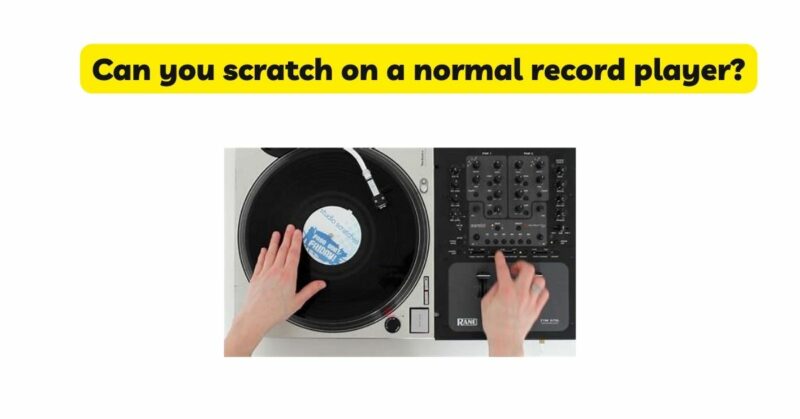Scratching has become a prominent technique in DJing, allowing performers to create rhythmic and percussive sound effects. However, many aspiring DJs wonder whether they can achieve scratching effects on a regular record player. In this article, we delve into the world of scratching and explore the possibilities of executing scratching techniques on a standard record player. By understanding the mechanics of scratching, considering the limitations of a regular turntable setup, and implementing certain techniques and equipment, we aim to shed light on the feasibility and potential for scratching on a non-specialized record player.
I. The Basics of Scratching
Before assessing the viability of scratching on a regular record player, it is crucial to understand the fundamentals of the scratching technique. Here are some key aspects:
- Hand Movement and Control: Scratching involves manipulating the record back and forth using the fingertips, hand, or specialized DJ tools like a slipmat or vinyl record. Precise hand movement and control are essential to produce the desired scratching effects.
- Stylus Contact: Scratching requires the stylus to make contact with the grooves of the record. The interaction between the stylus and the grooves generates the characteristic sound effects associated with scratching.
II. Limitations of a Regular Record Player
A standard record player may pose certain limitations when it comes to executing scratching techniques effectively. Here are some factors to consider:
- Stylus Design and Tracking Force: Regular record players often come with a standard stylus that is not optimized for scratching. These styli may not provide the necessary precision, control, and durability required for scratching. Additionally, the tracking force of a standard stylus may not be suitable for the rigors of scratching.
- Turntable Platter and Speed Control: Standard record players may have limitations in terms of platter design and speed control. Scratching often requires a stable and responsive platter, along with the ability to adjust and control the rotational speed of the record. Limited speed control options on a regular record player can impact the scratching experience.
III. Techniques and Equipment for Scratching on a Regular Record Player
While a regular record player may present challenges, there are techniques and equipment that can enhance the scratching experience. Here are some essential practices:
- Hand Techniques: DJs can still employ various hand techniques, such as baby scratching, chirping, or cutting, on a regular record player. These techniques involve manipulating the record manually with the fingertips to create rhythmic patterns and effects.
- Slipmats: Using slipmats can improve the scratchability on a regular record player. Slipmats made from materials like felt or cork can reduce friction between the record and the platter, allowing for smoother hand movements and better control.
- Cartridge Upgrade: Consider upgrading the cartridge on the record player to one specifically designed for scratching. DJ cartridges often feature robust stylus designs, better tracking ability, and increased durability, which can enhance the scratching experience on a regular record player.
- Speed Adjustment: Some regular record players may offer limited speed adjustment options. Utilizing the available speed controls can help DJs achieve different scratching effects and experiment with various rhythmic patterns.
IV. Embracing the Creative Possibilities
While a regular record player may have limitations compared to specialized DJ setups, it’s important to remember that scratching is an art form that encompasses creativity and innovation. DJs can adapt their techniques, explore different hand movements, and experiment with the available resources to create unique scratching sounds on a standard record player. The limitations can serve as creative challenges, pushing DJs to find inventive ways to achieve desired effects within the given constraints.
Conclusion
While a regular record player may not offer the optimal setup for scratching, DJs can still explore scratching techniques and create engaging sound effects. By understanding the fundamentals of scratching, making use of slipmats, considering cartridge upgrades, and embracing creative possibilities, DJs can unleash their creativity and experiment with scratching on a standard record player. While the experience may differ from using specialized DJ turntables, it is a valuable opportunity for aspiring DJs to develop their skills, cultivate their style, and gain a deeper understanding of the art of scratching.


